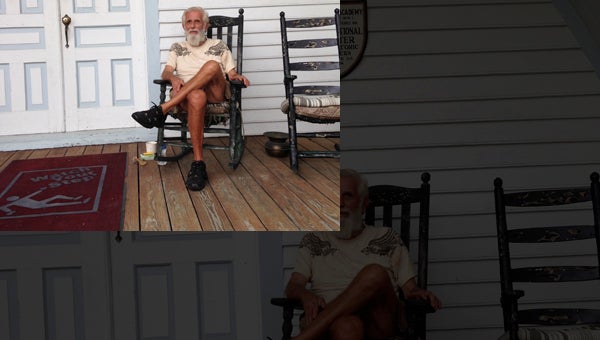Sights and stories of Pantego Academy Historical Museum
Published 6:18 pm Wednesday, August 12, 2015

GAIL FOWLER
A PIECE OF HISTORY: At a recent visit to Pantego Academy Historical Museum, Gail Fowler and her husband were greeted by John Ratcliff, a volunteer docent at the museum, who told the Fowlers many interesting stories about the area.
By GAIL FOWLER
When my husband and I pulled up to the Pantego Academy Historical Museum, in a tiny hamlet of 179 people just outside of Belhaven, John Ratcliff was sitting in a rocking chair on the front porch. He didn’t know we were coming; he didn’t know if anyone was coming, as the museum is open for limited hours every weekend. Yet I had a strange feeling he was expecting us.
Fortuitous. I had just read a collection of tidbits John Ratcliff posted in an old newsletter, archived on line, titled “Murder, Mayhem, Robbery and Houses of Ill-Repute.” That grabbed my attention and prompted our visit.
Having spent most of his life in Pantego, raised in a multi-generational household in an era when children were seen and not heard, John did “a lot of listening,” he told us. A retired high school teacher, John has a gift for storytelling, and we had him all to ourselves. He guided us through the former Male and Female Academy/Pantego High School, originally a subscription school he explained, where students paid per subject. Non-academy exhibits that take up a lot of the building now include a collection of items from daily life, rural living/farming and a replica of a general store. Two buildings — a wooden jailhouse, one of only two remaining in North Carolina, and an old lumber office — were moved to the property for preservation.
During the nearly two hours we spent touring the property, John weaved in stories about his childhood, local lore and his relatives, including a murdered aunt whose sewing chair, the one in which she was bludgeoned to death, is a museum oddity; his mother didn’t want it in the house. Another item of interest is the old schoolhouse bell (circa 1879), cast out of horse manure and sand, documented by the Discovery Channel show Dirty Jobs.
Although many of the exhibits inside the Academy can be found replicated in other small-town museums, the structure itself is architecturally significant with a one-of-a-kind exterior, arched staircase with 21 steps on either side, one for males and one for females; the academy was way ahead of its time, welcoming both sexes, when it was founded in 1874. For us, the true novelty of the day was meeting John, who clearly loves his job as a volunteer docent and caretaker of the past, his past.
I’m convinced that if we spent just a little more time inside the academy with John, we might have smelled the pinto beans cooking in what was the kitchen or heard the distinct footsteps of a former headmaster who had a wooden leg. The ghosts are stirring to be heard, if not seen. Just ask John. If you’re lucky, he might just be waiting on the front porch when you arrive.





